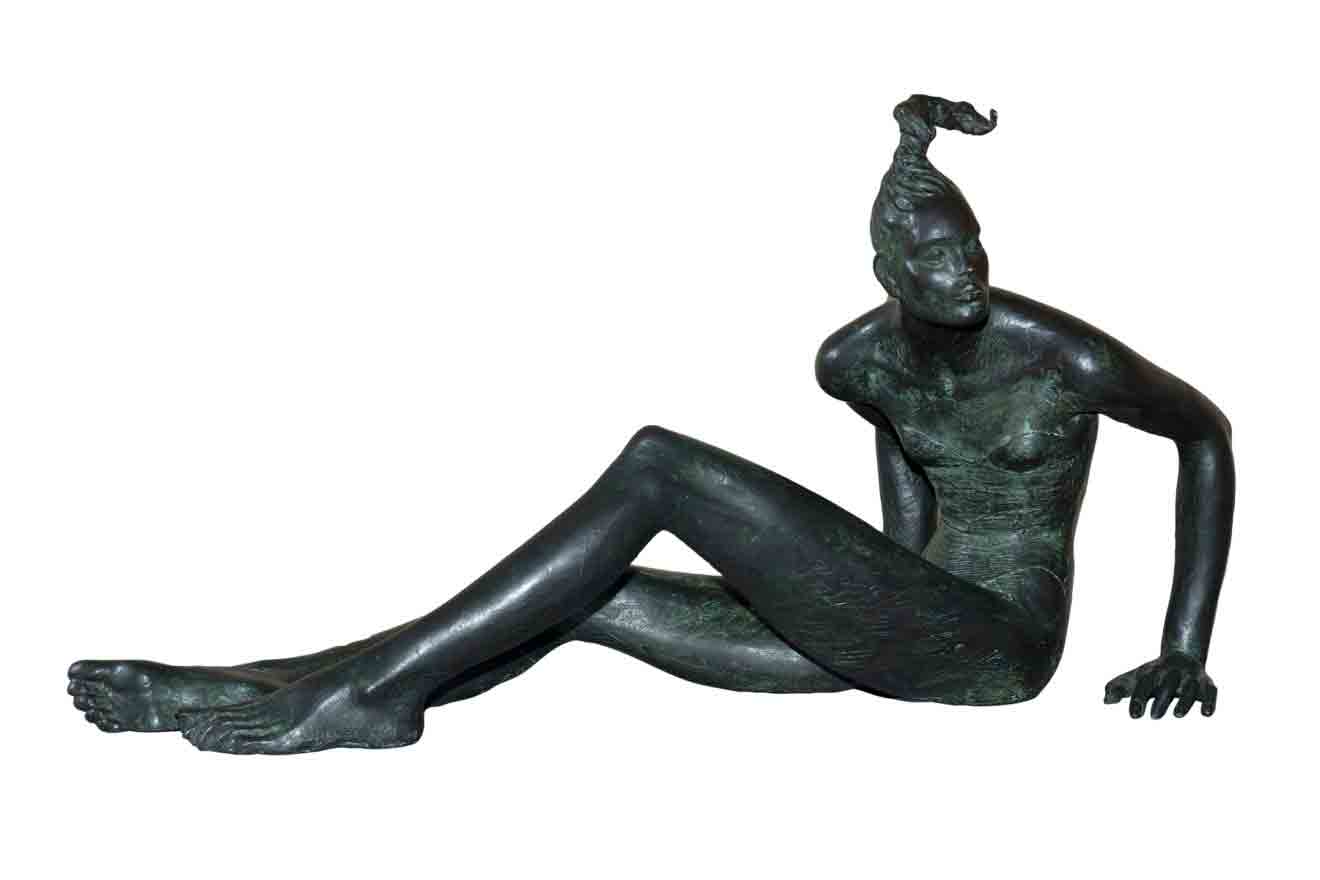Work: Archetypal presence (Lucy)
Original sculpture

Original
- Author
- Tiziana Felicioni
- Date
- 1996
- Period
- 20th Century
- Dimensions
- 43 cm high, 76 cm wide, 40 cm deep
- Technique
- casting, patination
- Material
- bronze
- Space
- 20th Century and Contemporary
Photo: Maurizio Bolognini. Museo Tattile Statale Omero Archive.
Description
“The faces and features of the statues are devoid of any individualizing particularity; in fact they do not remind one of any specific person and are not burdened by realistic connotations, but evoke the classical ideal of harmony and quiet grandeur.”, Ignazio Silone Foundation.
“Archetypal presence” is a bronze sculpture created by Tiziana Felicioni in 1996 and temporarily granted on loan for use by the Museo Omero. It represents a slim, elegant, semi-reclining female body, measuring 76 centimetres in length.
The woman, dressed only in a tight bodysuit, is sitting with her long legs stretched out, her torso leaning forward, her hands on the ground, her arms bent backwards. Her left leg is slightly bent with her foot flat on the ground; Her bent right leg, with the sole of the foot turned inwards, has fallen to the right. Her hands, thin and open, rest on the base, just behind her buttocks. Her trunk is flexed forward and turned to her left, forming an accentuated curved line, which creates a strong contrast with the broken lines and the sharp corners of her bent limbs.
Her head follows the rotation of the torso to the left, giving the impression that the woman has just turned as if called by something. The ovoid head has a face with clear cut features: a closed mouth with full lips, a slim regular nose, thin arched eyebrows over half-open eyes. Her expression does not appear to suggest any sentiment. Her hair is gathered into a helicoidal ponytail, which seems to gather up all the energy generated by the body then lets it go, free, into the surrounding space.
This female figure with the fascinating torsion in the body, long tapered limbs, and the small head grafted on to a long neck, is reminiscent of the exaggerated proportions and virtuosity of late 16th century Mannerist art, in particular Giambologna in sculpture and Parmigianino in painting.
